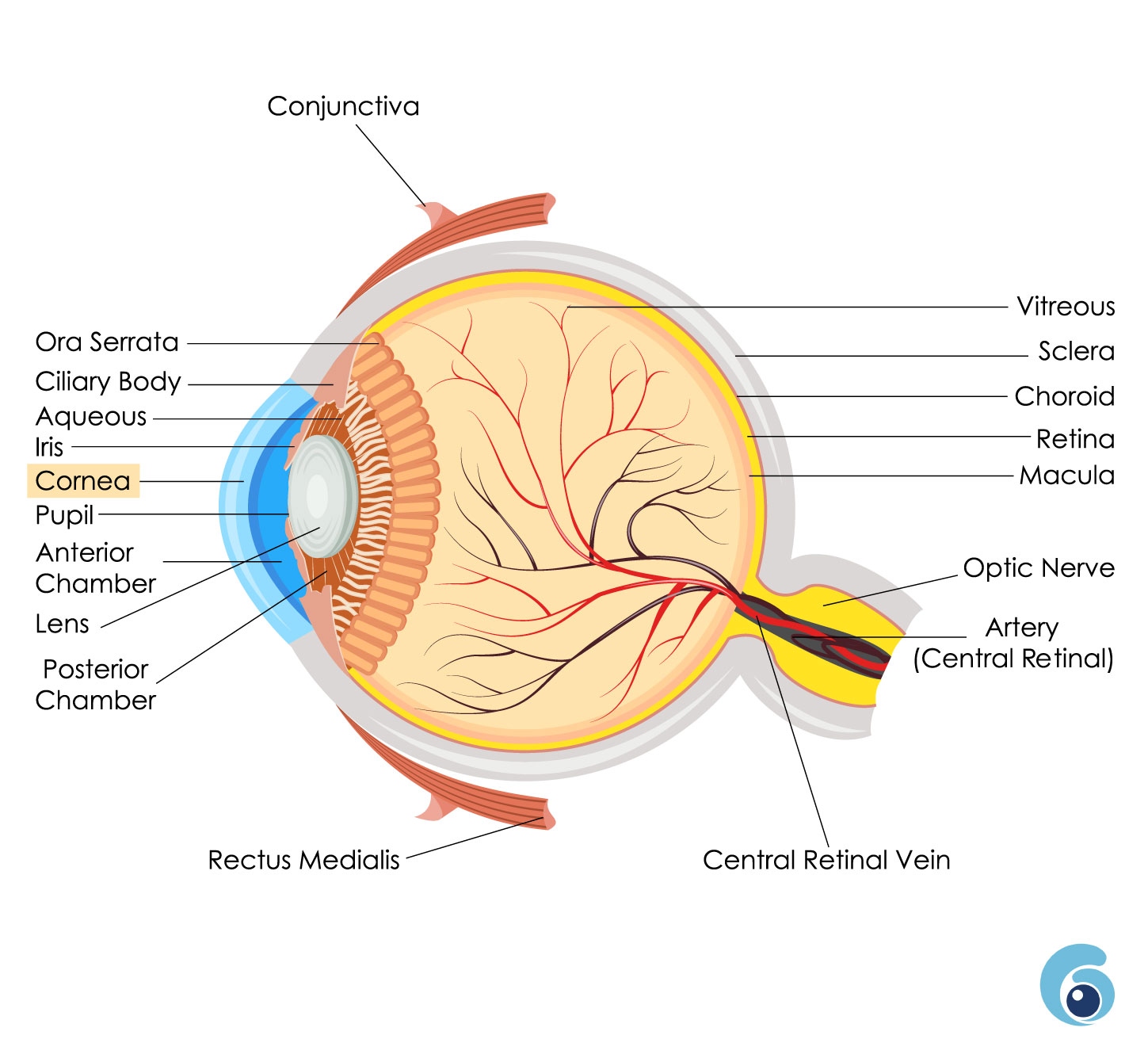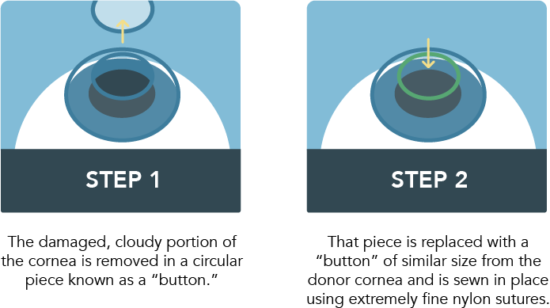Corneal Transplant Surgery Procedure
The corneal transplant Surgery procedure has evolved over the last century. Today, it is safely and routinely performed as an outpatient procedure on thousands of patients each year, by experienced cornea specialists, like Russell Van Norman, MD. The corneal transplant procedure can be accomplished through various methods, which are determined based on the patient’s particular disease or type of eye damage.
Maintaining the best eye care health is Dr. Van Norman’s number one priority with all of his patients.
There are two main types of cornea transplants: traditional, full thickness corneal transplant (also known as penetrating keratoplasty, or PK) and posterior layer cornea transplant (also known as endothelial keratoplasty, or EK). One of the most exciting innovations in corneal transplantation is two newer techniques called DSAEK and DMEK
Corneal eye disease is the fourth most common cause of blindness (after cataracts, glaucoma and age-related macular degeneration) and affects more than 10 million people worldwide. Since 1961, more than one million people have had their sight restored with a cornea transplant.

What is the Cornea?
The cornea is analogous to a clear watch crystal or window on the front surface of the eye. Light must pass through the cornea before the incredibly complex and miraculous visual process can occur. When the cornea is structurally altered by trauma or certain diseases, it becomes cloudy and often, vision is impaired. In such cases a corneal transplant is needed to restore sight.
A healthy, clear cornea is essential for good vision. If your cornea is damaged due to eye disease or eye injury, it can become swollen, scarred or severely misshapen and distort your vision. Occasionally, either through disease or injury, the corneal tissue is damaged to a point where light can no longer effectively pass through it, resulting in reduced vision.
Where indicated by an ophthalmologist, corneal transplants may be performed which replace the damaged cornea with a clear donor cornea. This is an extremely delicate microsurgical procedure. A cornea transplant may be necessary if eyeglasses or contact lenses can’t restore your functional vision, or if painful swelling can’t be relieved by medications or special contact lenses.
Certain conditions might affect the clarity of your cornea and vision, putting you at greater risk of corneal failure. Some of these dangerous conditions include:
- Excessive swelling (edema) of the cornea.
- Chemical burns of the cornea, or damage from another type of eye injury.
- Scarring resulting from infections, such as eye herpes or fungal keratitis.
- Scarring from trichiasis; where eyelashes grow inwardly, toward the eye, rubbing against the cornea.
- Some hereditary conditions or diseases such as Fuchs’ dystrophy.
- Thinning of the cornea and irregular corneal shape (as with keratoconus).
- Rare complications resulting from LASIK surgery, or corneal failure due to cataract surgery complications.
- Graft rejection following a previous corneal transplant.

Endothelial Dystrophy procedure is used to visually rehabilitate patients with Fuchs’ Endothelial Dystrophy and pseudophakic bullous keratopathy. These procedures are performed in a fraction of the time required by the older, more conventional transplant procedure known as PKP (penetrating keratoplasty). Other exciting innovations also have occurred in ALK (anterior lamellar keratoplasty). ALK is used to visually rehabilitate patients with keratoconus, corneal scars, and irregular corneas following RK or LASIK surgery. The beauty of this procedure is that the patients can be rehabilitated with no fear of corneal endothelial graft rejection.
Once the decision has been made, you will be less anxious and feel more in control if you know what to expect – what the “normal” routine is for this type of surgery. The more information you have, the more prepared you will be.
